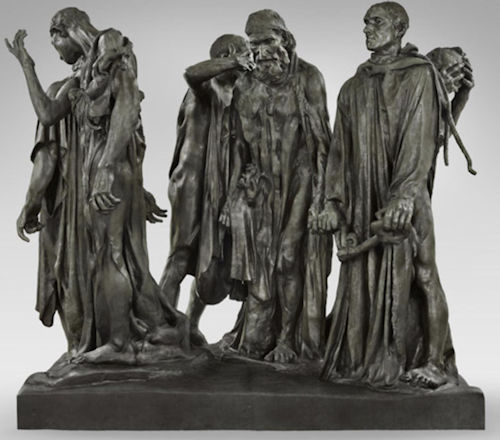
Human Anatomy Sculpture
Level: Middle School
Duration: Six 45-minute class periods
Historical Overview: August Rodin (1840-1917) and France
Goals and Objectives: To introduce sculpting techniques
Vocabulary: Positive and negative space, carving additive and subtractive methods, proportion, scale
Materials: Clay, wire, wood, nails, armature, carving tools, wire and washer clay cutting tool, sponges, water containers, tooth brushes, spray bottle
Procedures:
Day 1
- Anticipatory Set: Show posters and books of images of different prints by artist Rodin.
- Slide lecture on history of figure modeling (Romans, Greeks, Etruscan).
- Class discussion on artists shown.
- Wedge clay.
- Make wire and washer clay cutting tool.
- Review proportions.
- Review vocabulary.
Day 2
- Have students rotate around model to find their favorite view.
- Set up armatures posing wire to suit gesture of model.
- Make preliminary foundation of clay for figure.
- Make tape marks for model marking hand, feet, and body placement (note eye direction for better future head positioning).
Day 3
- Realign clay to match pose.
- Review variety of methods for adding clay (i.e. brush, scoring with wood tool etc.).
- Demo techniques
- Explore variety of textures.
Day 4
- Continue additive method.
- Demonstrate subtractive method and found tools.
Day 5
- Students continue work, making sure to spray clay and wrap well.
Day 6
- Students complete projects.
- Students critique sculptures.
Book List: Human Anatomy
A Method to Learn to Design the Passions – Charles Lebrun, Augustan Reprint Society, 1980
Atlas of Human Anatomy for the Artist – Stephen Rogers Peck, Oxford University Press, 1970
Dynamic Anatomy and Physiology – Leroy Lester Langley, McGraw-Hill Inc., 1974
Dynamic Anatomy – Burne Hogart, Watson Guptill Publications, 1958

